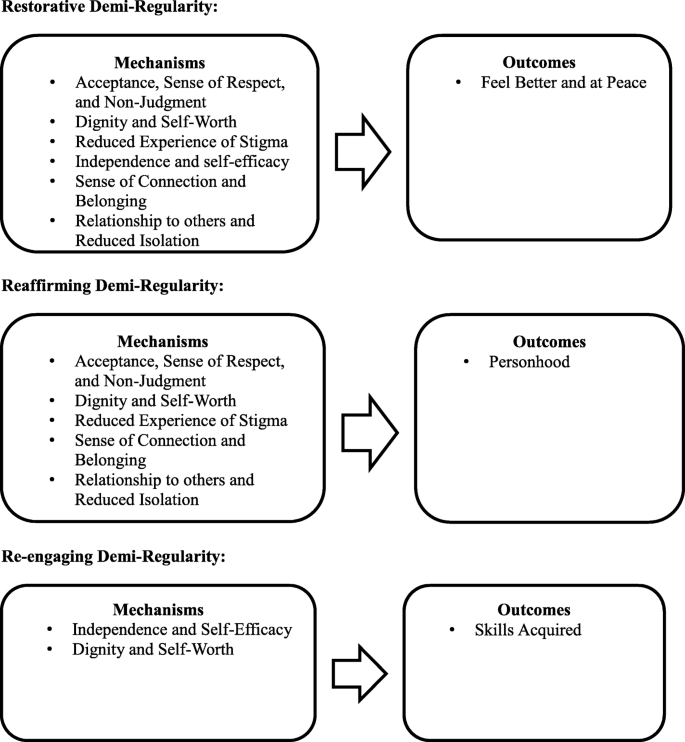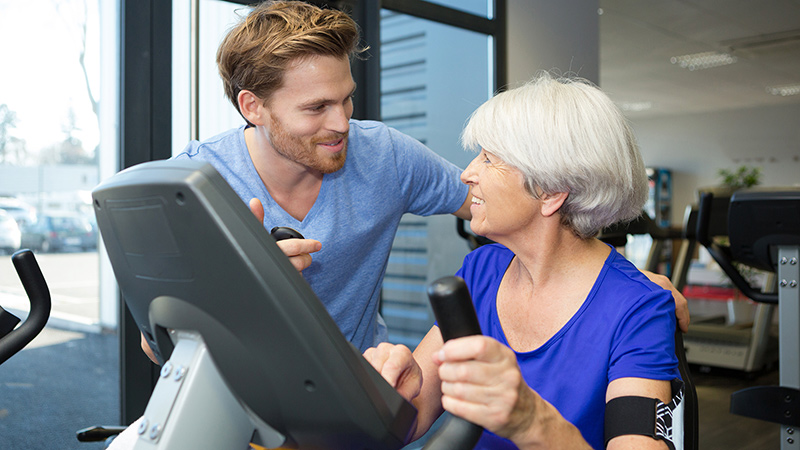Called Client-Directed Outcome-Informed treatment (CDOI), this technique has actually been used by numerous drug treatment programs, such as Arizona's Department of Health Providers. Psychoanalysis, a psychotherapeutic approach to behavior modification developed by Sigmund Freud and customized by his followers, has likewise provided an explanation of substance abuse. This orientation suggests the primary reason for the addiction syndrome is the unconscious need to amuse and to enact various type of homosexual and perverse dreams, and at the same time to avoid taking obligation for this.
The dependency syndrome is likewise assumed to be associated with life trajectories that have occurred within the context of teratogenic processes, the phases of which include social, cultural and political elements, encapsulation, traumatophobia, and masturbation as a kind of self-soothing. Such a method depends on plain contrast to the techniques of social cognitive theory to addictionand certainly, to habits in generalwhich holds people to regulate and manage their own ecological and cognitive environments, and are not simply driven by internal, driving impulses.
An influential cognitive-behavioral method to dependency recovery and treatment has actually been Alan Marlatt's (1985) Regression Avoidance technique. Marlatt describes 4 psycho-social processes appropriate to the dependency and regression processes: self-efficacy, result expectancy, attributions of causality, and decision-making procedures. Self-efficacy describes one's capability to deal properly and successfully with high-risk, relapse-provoking scenarios.

Attributions of causality describe an individual's pattern of beliefs that relapse to substance abuse is a result of internal, or rather external, short-term causes (e.g., permitting oneself to make exceptions when confronted with what are judged to be uncommon scenarios). Finally, decision-making procedures are implicated in the regression process also.
Moreover, Marlatt worries some decisionsreferred to as obviously unimportant decisionsmay seem inconsequential to regression, however may in fact have downstream ramifications that place the user in a high-risk situation. For example: As a result of rush hour, a recuperating alcoholic might decide one afternoon to exit the highway and travel on side roads.
If this individual is able to use successful coping techniques, such as distracting himself from his cravings by switching on his preferred music, then he will prevent the relapse risk (PATH 1) and increase his efficacy for future abstaining. If, nevertheless, he does not have coping mechanismsfor instance, he may begin ruminating on his cravings (PATH 2) then his effectiveness for abstaining will decrease, his expectations of positive results will increase, and he may experience a lapsean separated return to substance intoxication.
The 5-Minute Rule for How Does The Brain Recover From Rehab Drug Abbuse
This is a dangerous pathway, Marlatt proposes, to full-blown relapse. An extra cognitively-based design of compound abuse healing has been offered by Aaron Beck, the father of cognitive treatment and championed in his 1993 book Cognitive Treatment of Compound Abuse. This treatment rests upon the presumption addicted people have core beliefs, often not available to instant awareness (unless the client is likewise depressed).
As soon as yearning has actually been triggered, permissive beliefs (" I can deal with getting high simply this one more time") are assisted in. As soon as a permissive set of beliefs have actually been triggered, then the individual will trigger drug-seeking and drug-ingesting behaviors. The cognitive therapist's job is to uncover this underlying system of beliefs, evaluate it with the patient, and thus demonstrate its dysfunction.
Considering that nicotine and other psychedelic substances such as cocaine trigger comparable psycho-pharmacological paths, a feeling policy approach may be appropriate to a wide selection of compound abuse. Proposed designs of affect-driven tobacco usage have actually focused on unfavorable reinforcement as the main driving force for addiction; according to such theories, tobacco is utilized since it helps one escape from the unwanted results of Click to find out more nicotine withdrawal or other unfavorable moods.
Mindfulness programs that encourage patients to be knowledgeable about their own experiences in the present moment and of emotions that occur from ideas, appear to avoid impulsive/compulsive responses. Research likewise shows that mindfulness programs can reduce the consumption of substances such as alcohol, cocaine, amphetamines, marijuana, cigarettes and opiates. For example, somebody with bipolar condition that suffers from alcohol addiction would have double diagnosis (manic depression + alcoholism).
According to the National Study on Substance Abuse and Health (NSDUH), 45 percent of individuals with dependency have a co-occurring psychological health disorder. Behavioral designs utilize concepts of practical analysis of drinking behavior. Habits models exist for both dealing with the compound abuser (neighborhood reinforcement technique) and their family (neighborhood reinforcement method and household training) - how to start a drug rehab program.
This model lays much emphasis on the usage of problem-solving strategies as a means of helping the addict to overcome his/her dependency. Despite continuous efforts to combat dependency, there has actually been proof of clinics billing clients for treatments that might not ensure their recovery. This is a major issue as there are numerous claims of scams in drug rehab centers, where these centers are billing insurer for under providing much required medical treatment while exhausting clients' insurance advantages.
The Ultimate Guide To What Is Inpatient Drug Rehab
Under the Affordable Care Act and the Mental Health Parity Act, rehab centers are able to costs insurance provider for drug abuse treatment. With long wait lists in limited state-funded rehabilitation centers, controversial private centers quickly https://angelmedmg.doodlekit.com/blog/entry/10547185/getting-the-how-to-rehab-a-pulled-hamstring-to-work emerged. One popular model, called the Florida Model for rehab centers, is frequently criticized for deceptive billing to insurer.
Little attention is paid to patients in terms of dependency intervention as these patients have often been understood to continue drug usage throughout their remain in these centers. Because 2015, these centers have been under federal and state criminal investigation. Since 2017 in California, there are only 16 private investigators in the CA Department of Healthcare Solutions investigating over 2,000 certified rehabilitation centers.
Collaboration for Drug-Free Kids - Where Families Discover Answers. Obtained 24 October 2017. Marlatt, G, Alan (2005 ). New York City City: The Guilford Press. pp. 81. ISBN 1-59385-176-6. Abuse, National Institute on Drug Abuse. " Concepts of Effective Treatment". Schaler, Jeffrey Alfred (1997 ). "Dependency Beliefs of Treatment Michael Vick Providers: Aspects Explaining Variance".

4 (4 ): 367384. doi:10 (how much does drug rehab cost without insurance).3109/ 16066359709002970. hdl:. ISSN 1476-7392. NIDA InfoFacts: Treatments Approaches for Drug Addiction National Institute on Drug Abuse (NIDA). Retrieved on 2010-08-17 Concepts of Drug Dependency Treatment National Institute on Drug Abuse (NIDA) > " Motivational Interviewing". SAMHSA. Archived from the original on 13 December 2012. Stitzer ML, Petry NM, Peirce J (2010 ).
Journal of Compound Abuse Treatment. 38 Suppl 1: S619. doi:10.1016/ j.jsat. 2009.12.010. PMC. PMID 20307797. Scott, William C.; Kaiser, David; Othmer, Siegfried; Sideroff, Stephen I. (7 July 2009). "Effects of an EEG Biofeedback Procedure on a Mixed Substance Abusing Population". The American Journal of Drug and Alcohol Abuse. 31 (3 ): 45569.
PMID 16161729. Dehghani-Arani, Fateme; Rostami, Reza; Nadali, Hosein (20 April 2013). " Neurofeedback Training for Opiate Dependency: Improvement of Mental Health and Yearning". Applied Psychophysiology and Biofeedback. 38 (2 ): 133141. doi:10.1007/ s10484-013-9218-5. PMC. PMID 23605225 (how to open a drug rehab business). Arani, Fateme Dehghani; Rostami, Reza; Nostratabadi, Masoud (July 2010). "Effectiveness of Neurofeedback Training as a Treatment for Opioid-Dependent Clients".
Rumored Buzz on Drug Rehab Where Your Kid Can Come With You
41 (3 ): 170177. doi:10.1177/ 155005941004100313. PMID 20722354. Dalkner, Nina; Unterrainer, Human F.; Wood, Guilherme; Skliris, Dimitris; Holasek, Sandra J.; Gruzelier, John H.; Neuper, Christa (26 September 2017). " Short-term Beneficial Results of 12 Sessions of Neurofeedback on Avoidant Personality Accentuation in the Treatment of Alcohol Use Disorder". Frontiers in Psychology. 8: 1688.